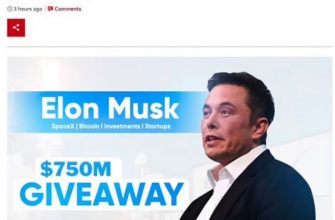I know I’m not alone in my anxious anticipation for the upcoming Avengers sequel. Labeled “Earth’s Mightiest Heroes,” this superhero team was created in 1963. While this first incarnation included different characters from the blockbuster movie, the ideals have remained constant – to fight “the foes no single superhero can withstand.” To accomplish this lofty goal, the Avengers were early adopters of what’s known as Holacracy.
Holacracy is an organizational structure in which authority and decision-making are distributed throughout self-organized teams rather than being vested at the top of a hierarchy. This “self-governing” operating system replaces the traditional management structure of authority-based power by removing job titles and the “manager” role. Individuals are granted greater entrepreneurial leeway and are encouraged to take more initiative, accountability, and responsibility through a relatively self-managed workplace culture.
Contents
- It’s not leaderless. There are certainly people who hold a bigger scope of purpose for the organization than others. What it does do is distribute leadership into each role. Everybody is expected to lead and be an entrepreneur in their own roles, and Holacracy empowers them to do so… [The system is] quickly evolving to define and operate the purpose of the organization, responding to market and real-world conditions in real time. – John Bunch , leading the transition to Holacracy at Zappos
- There’s a great moment at the end of [Avengers: Age of Ultron] that we won’t spoil, but it involves the notion of them realizing that the only way through all this is together. And I love that. It’s one of my favorite moments in the film. – Kevin Feige , President of Marvel Studios
- Share here:
It’s not leaderless. There are certainly people who hold a bigger scope of purpose for the organization than others. What it does do is distribute leadership into each role. Everybody is expected to lead and be an entrepreneur in their own roles, and Holacracy empowers them to do so… [The system is] quickly evolving to define and operate the purpose of the organization, responding to market and real-world conditions in real time. – John Bunch, leading the transition to Holacracy at Zappos
This sounds like the Avengers. Iron Man, Thor, Captain America, Black Widow, Hawkeye, and Hulk are each self-sufficient superheroes who have volunteered to spend their free time serving on this super-powered team. All members have some degree of leadership responsibility and, depending on the situation, will take turns being ‘in charge” – Captain America may be the lead tactician during a battle, while Bruce Banner may run the research lab. As a result, the work performed by each member is based on job skills and abilities, not on a designated job description.
There’s a great moment at the end of [Avengers: Age of Ultron] that we won’t spoil, but it involves the notion of them realizing that the only way through all this is together. And I love that. It’s one of my favorite moments in the film. – Kevin Feige, President of Marvel Studios
Instead of a hierarchical pyramid, Holacratic organizations are divided into a collection of self-organizing circles that are aligned around operational needs. These circles often overlap and are encompassed by the company-wide circle. Each circle has the authority to create and execute its own activities and disbands as goals are completed and/or priorities change.
The Avengers have circles both within the team and in their non-Avenger lives. For instance, Tony Stark holds multiple roles and moves fluidly throughout his three primary circles – his company, Iron Man, and his personal life. Within the company are his circles for PR, research and development, and finance. The Iron Man circle encompasses the Avengers, solo missions, and research and development which overlaps with the company circle. And the circles of Tony’s personal life include his girlfriend who is also the President of his company (an overlap) and his best friend who also serves as his sidekick (another overlap).
To maintain a group like the Avengers, the flexibility and adaptability of a Holacracy must be incorporated into the fabric of the organizational structure. Autonomy is essential as are the diversity of tasks and an ability to chart their own path. Not every organization or leader can handle the non-linear complexity of a Holacracy, nor are willing to relinquish power. Just look at Nick Fury.
Nick Fury, who first conceived of and initiated the Avengers program, is a man who likes control. He wants to give orders that are followed without question. Like most leaders, Nick wants the most capable and high functioning team possible. Also like most leaders, he doesn’t recognize that the best and brightest need more freedom to solve problems, prioritize, and structure their time. Note: This may be the only time I recommend that you try to be less like Samuel Jackson.
If you chose to inject Holacracy into your organization, keep in mind that this is not a lawless, laissez faire culture; more accountability comes with a price. Poor performers have nowhere to hide and harmful decisions cannot be tucked away. The Avengers have shown that membership on a Holacratic team is not a lifetime guarantee; even after saving Earth countless times, legendary superheroes have been removed from the roster.
The move towards Holacracy can be both a painful and fulfilling process. Change is typically resisted…and this is a big change. Once the transition is complete, empowering employees to operate like entrepreneurs will motivate and engage your high-caliber staff. Just be respectful of those who need more convincing, enact a realistic timetable to implement, and as always, don’t make Hulk angry.






